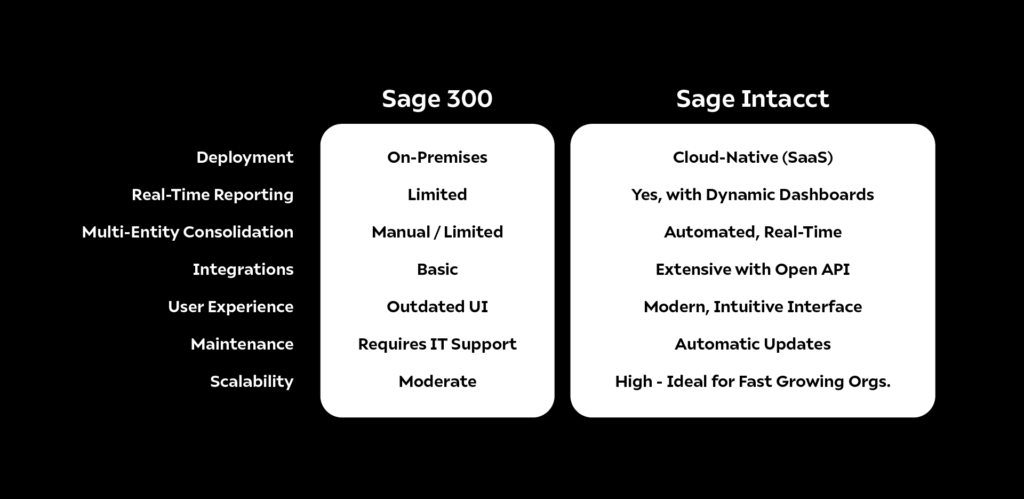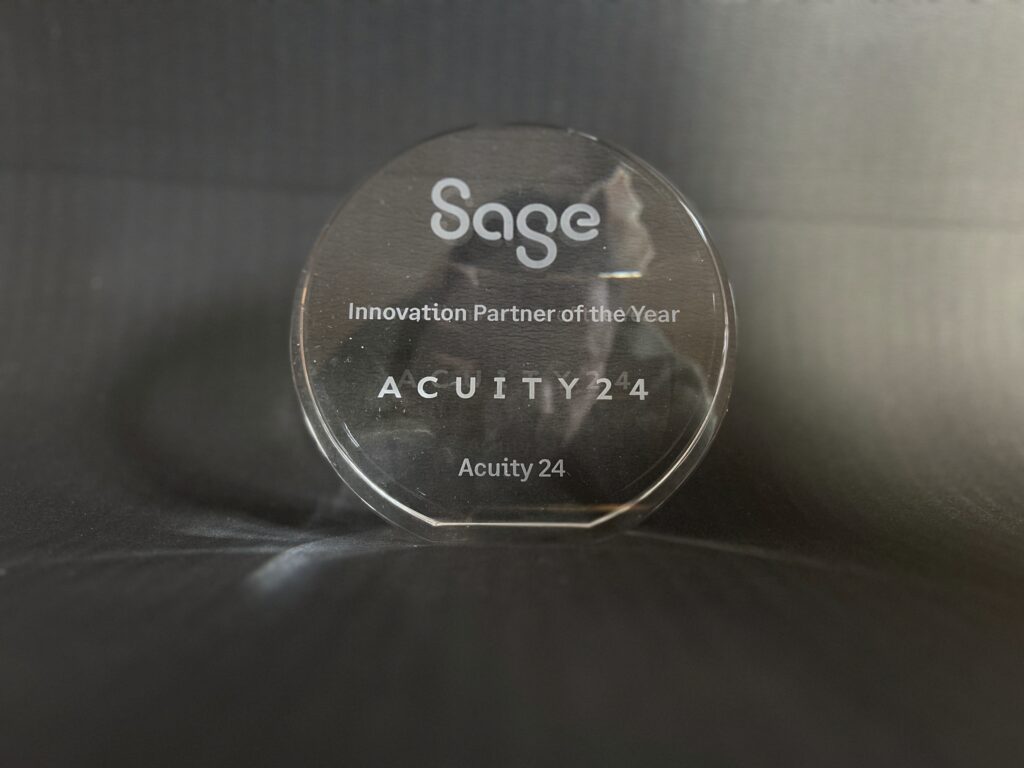These two Sage solutions serve very different needs; read our Sage 300 vs Sage Intacct comparison to explore which system best supports business growth, flexibility and performance.
Sage 300: A Reliable Legacy ERP System
Sage 300 (formerly known as Accpac) is a long-standing trusted accounting and enterprise resource planning (ERP) system used by small-mid sized businesses. A traditional on-premise or hosted solution, Sage 300 is primarily designed for managing accounting, inventory and operations. Customers have been able to rely on the system for years, but as market conditions continue evolving, Sage 300’s legacy architecture can show its limitations.
Sage 300 vs Sage Intacct 2025
As technology advancements continue to shape the way businesses operate, the systems you use are vital to help support growth and keep up with developments. Let’s look at the differences between Sage 300 vs Sage Intacct in more detail:
SAGE 300 FEATURES:
- Multi-currency and multi-location support
- Core accounting and operational modules
- On-premise or private-hosted deployment
- Third-party add-ons and modules for customisation
SAGE 300 CHALLENGES:
- Manual consolidations and reporting
- Limited integration options
- Additional IT costs for system maintenance and upgrades
- Slower pace of innovation compared to modern cloud platforms
SAGE 300 VS SAGE INTACCT QUICK COMPARISON

Sage Intacct: Cloud-Based, Flexible and Customisable Financial Management
Fully cloud-based, Sage Intacct is a best-in-class financial management solution, designed to automate complex and repetitive processes, provide real-time visibility and adapt with your business as it evolves.
Muliple layers of protection provide advanced security, with automatic updates and a 99.5% + uptime ensuring Sage Intacct customers are always on the latest version and secure.
Get Advice
What is Sage Intacct used for?
Sage Intacct’s robust functionality and advanced features mean it overcomes traditional system limitations in ways, allowing business to:
*Easily add new entities and additional users, with no impact on system performance or cost.
*Harness powerful automation to consolidate hundreds of entities in minutes.
* Customise the solution to suit and adapt to business needs, thanks to Intacct’s flexible modular design.
*Access real-time insights via internet connected devices; view KPIs, reports, checklists and more on the go or while working remotely.
How long does it take to implement Sage Intacct?
Our experienced Sage Intacct team provide a professional and personalised experience and have successfully implemented Sage Intacct in as little as 6 weeks! Timing varies depending on the complexity and scale of implementation, with more details and timelines given when speaking to one of our consultants.
About Acuity24
Our dedicated Sage Intacct and Sage X3 teams strive to deliver seamless implementations and enhanced support for Acuity24 customers. We provide fixed price services, unlimited support options and an abundance of free training and support, to help you get the most out of your chosen solution.
Get in touch to find out more or see what our customers say in our Case Studies:


